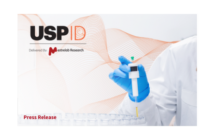qNMR: quantitative NMR
qNMR stands for “quantitative NMR” and refers to the use of NMR to determine the concentration of one or more chemical species in solution. Whilst doing this properly and to a very high level of precision takes some consideration – which I will cover in future articles in this topic series – this simple, fundamental tenet is what makes it so attractive:
The area of an NMR signal is directly proportional to its concentration, and this “response” will be the same for all molecules
And this is also what sets qNMR apart from almost all other metrological techniques used to quantify compounds. Each suffers with problems such as compound-specific response factors (UV), chemical considerations (NCLD), or relative volatility (ELSD).
The qNMR method only requires that (a) the sample dissolves completely in a (normally fully deuterated) solvent, and (b) it contains NMR-active nuclides – and that some care and attention is paid to data collection and processing. Through this series of articles we shall start by focusing on the application of qNMR to organic molecules where protons are available for detection, but the same principle would apply to NMR applied to 19F, 31P, etc. We should also remember the very high structural information content in NMR spectra, and its value in also providing uniquely rich qualitative information.
qNMR has already found wide acceptance as has been applied to a myriad substrates. These include (but are by no means restricted to):
- accurate determination of the purity levels of active pharmaceutical ingredients (APIs), and drug analysis [1,2]
- quantitation of natural products [3]
- quantitating pharmaceutical compound libraries [4]
- forensic analysis [5]
- food sciences [6]
To correctly use NMR for quantitative purposes the data acquisition and processing conditions must meet some requirements if the data are to have relevance. [7] However, the question can be asked: what level of accuracy is required? In the most demanding cases this will be strict and require multiple samples to build statistical significance. Under these circumstances an error of
There are two broad categories of qNMR experiments: those used to determine the analyte concentration, and determination of a compound purity.
Concentration Determination
The concentration of a chemical species in an NMR experiment can be fundamentally determined using one of these methods:
Absolute integral
This first requires a standard reference compound solution of known concentration to determine an NMR “response factor” per nuclide under given experimental conditions. This method is simple in that it does not require addition of a standard material each time the quantitation is performed. This factor may be called a “Concentration Conversion Factor” (CCF). The same CCF can then be used to determine the concentration of chemical components in future experiments.
Internal standard
The basic idea here is also simple: a spectrum signal is generated and its “concentration” determined against a real compound standard of known concentration. Thereafter, this is used as an indirect concentration reference – a surrogate. There are broadly 3 classes of internal standards, but they are treated identically in practice. Most commonly, these are:
- An artificial signal added during signal acquisition (e.g., ERETIC)
- An artificial signal added to the processed spectrum (e.g., QUANTAS)
- The signal from the residual protonated solvent signal (e.g., DMSO-d5H)
NMR Purity
It is frequently necessary to determine the purity of a chemical compound. This is important in the analysis of APIs and forensics [5], for example. The carefully weighed analyte and reference material are co-dissolved, and the NMR spectrum carefully recorded. This method is usually used when the highest levels of accuracy are required. Careful attention must be paid to the selected reference material: certified standards are available commercially. [8]
Conclusions
qNMR has been known for about 3 decades, and has seen wide application. Despite this, there is a new generation of analysts and application scientists becoming aware of the potential of the technique and its popularity is witnessing a resurgence of interest. That, together with significant advances in the data processing aspect, is breathing fresh life into the much loved technique. In the following articles I shall write about some specifics of qNMR, and hopefully describe some aspects of interest to neophyte and veteran alike.
- Holzgrabe, U.; Deubner, R.; Schollmayer, C.; Waibel B., Quantitative NMR spectroscopy—Applications in drug analysis, Journal of Pharmaceutical and Biomedical Analysis, 2005, 38, 806-812. DOI: 10.1016/j.jpba.2005.01.050
http://www.sciencedirect.com/science/article/pii/S0731708505001573- Espina R.; Yu, L.; Wang, J.; Tong, Z.; Vashishtha, S.; Talaat, R.; Scatina, J.; Mutlib, A., Nuclear magnetic resonance spectroscopy as a quantitative tool to determine the concentrations of biologically produced metabolites: implications in metabolites in safety testing, Chem. Res. Toxicol. 2009,22, 299-310.
- Pauli, G. F.; Gödecke, T.; Jaki, B. U.; Lankin, D. C., Quantitative 1H NMR. Development and Potential of an Analytical Method: An Update, J. Nat. Prod., 2012, 75, 834–851. DOI: 10.1021/np200993k
- Liu, X.; Kolpak, M. X.; Wu, J.; Leo, G. C., Automatic Analysis of Quantitative NMR Data of Pharmaceutical Compound Libraries, Anal. Chem., 2012, 84 , 6914–6918. DOI: 10.1021/ac301544u.
- Hays, P., Proton Nuclear Magnetic Resonance Spectroscopy (NMR) Methods for Determining the Purity of Reference Drug Standards and Illicit Forensic Drug Seizures, J. Forensic Sci., 2005, 50, 1.
- Maes, P.; Monakhova, Y. B.; Kuballa, T.; Reusch, H.; Lachenmeier, D. W., Qualitative and Quantitative Control of Carbonated Cola Beverages Using 1H NMR Spectroscopy, J. Agric. Food Chem., 2012, 60 , 2778–2784. DOI: 10.1021/jf204777m
- Argyropoulos, D.; Avizonis D., 2010. Electronic Referencing in Quantitative NMR. Encyclopedia of Magnetic Resonance. DOI: 10.1002/9780470034590.emrstm1168
- http://www.sigmaaldrich.com/content/dam/sigma-aldrich/docs/Fluka/General_Information/1/analytix_qnmr.pdf
Resources about qNMR
- Webinar by John Gauvin (GSM): "Basics for qNMR"
- Other resources here




